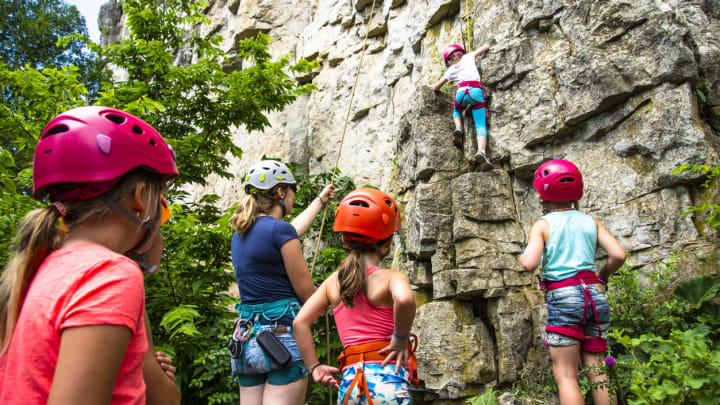Introducing Your Child to Rock Climbing - How, When, and Why

Children are introduced to playgrounds incorporating swings, youth-friendly rock walls, monkey bars, and balance beams early on. These elements involve height, strength, and balance. Similarly, a climbers' playground, typically a crag or a climbing gym, encompasses the same skills.
Humans are born with an innate sense of curiosity and adventure. Children, in particular, thrive when provided ample opportunities to explore, problem-solve, and increase self-efficacy, all of which are made possible through rock climbing.
Rock climbing is an enticing sport for youth and adults, as it welcomes curiosity and exploration, all while building self-efficacy and problem-solving skills. However, introducing an adult to rock climbing comes with more simplicity than it does with a child, primarily due to the general lack of discernment in children and additional precautions needed for a successful climbing trip.
Not only do children require more supervision at a crag, but they also require different gear. Due to the lack of developed hip bones in youth, it is recommended that they use a full-body harness rather than a typical sit harness. Additionally, an adult-sized helmet will not suffice - you will need a helmet designated for children to ensure a proper fit.
Black Diamond has an excellent selection of climbing gear available on the market, specifically designed for youth. The Capitan Kid's Helmet and the Momentum Kid's Full-Body Harness are both reputable and affordable options with stellar reviews. For older children with strong trunk muscles and well-defined hips, the Kid's Momentum Sit Harness would be a wise purchase.
There is no "right age" to introduce your child to rock climbing. However, it is important to start with top-roping which is essentially learning how to walk before you run. This method is not only the safer route, but it is also the best method for teaching the basics of rock climbing. Seek out a crag that has a short and mellow approach, along with a wide variety of hands and footholds.
If possible, it would be helpful to have a third climbing partner who is experienced and situated at the top of the crag for additional support when the child reaches the top-rope anchor. In doing so, the individual at the top can help coach the youngster in the lowering process.
Remain mindful of your child's limitations, both physically and mentally, as they tackle their first climb. By coaching them through the process and offering encouragement, their confidence will soar in climbing and life.
